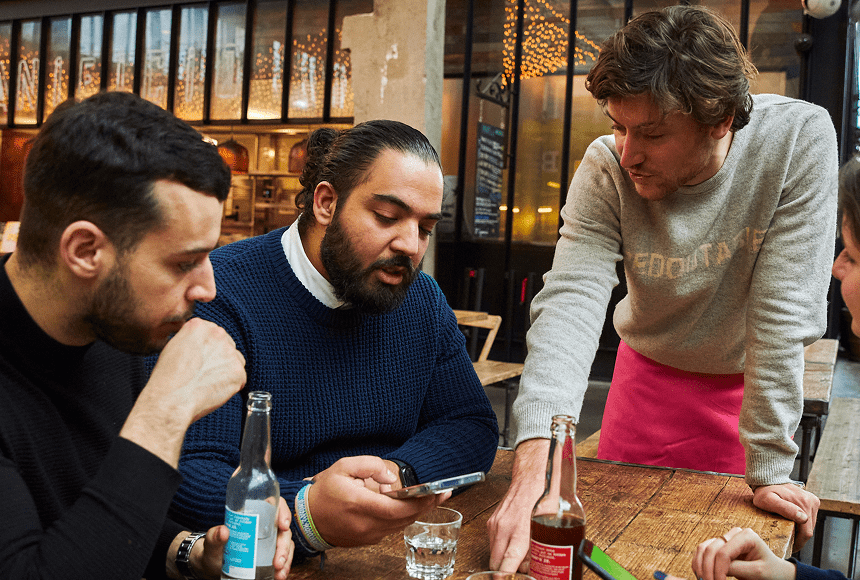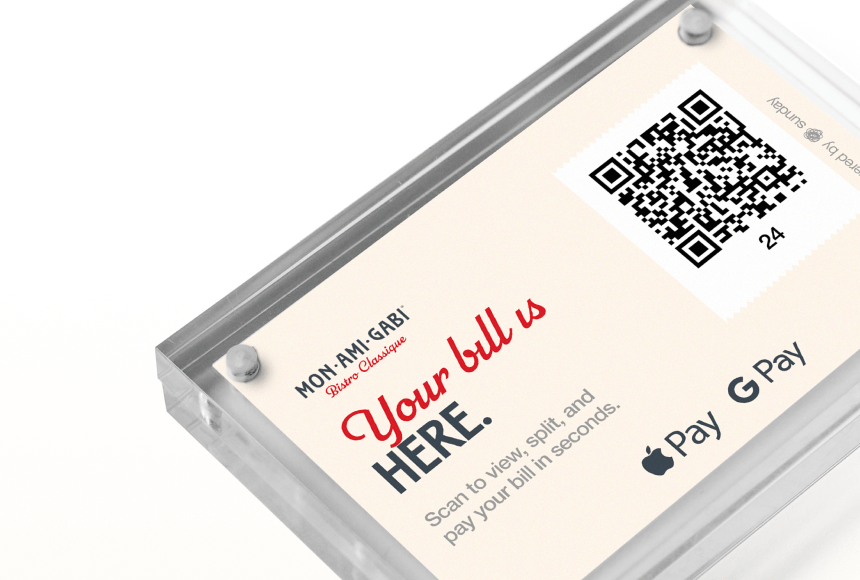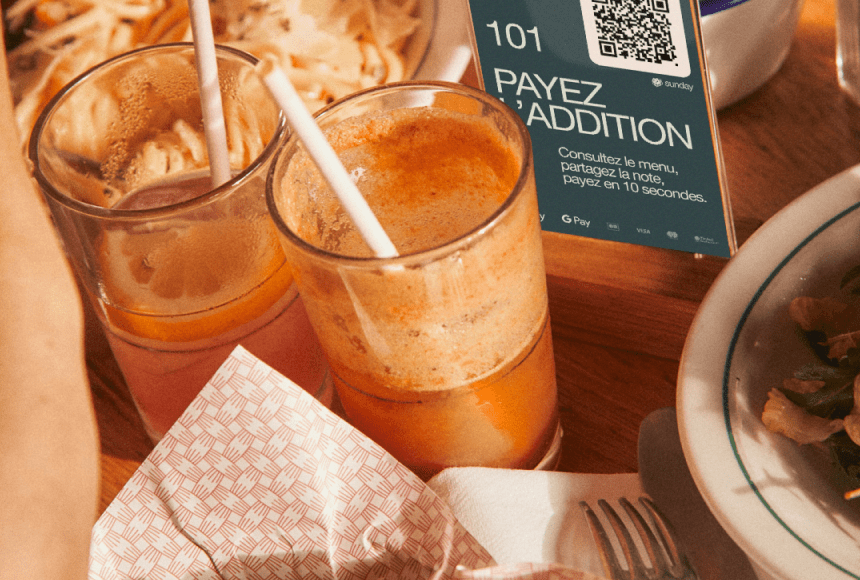A Fresh Approach to Managing Restaurant Rush Hours on the Slopes
Understanding the Unique Winter Rush
Every winter season, ski resorts across the United States welcome thousands of enthusiastic visitors who want to enjoy pristine snow, fresh mountain air, and unforgettable adventures. But when midday hunger strikes, the crowds swarm into on-site restaurants, cafés, and snack bars all at once. For you—the dedicated restaurant owner—keeping operations smooth and customers satisfied at those peak moments can feel like weaving down an icy black diamond slope without skis.
Guests don’t just show up for a quick meal; they’re often craving a cozy, mountainside refueling experience. But how do you meet high expectations and tackle the logistical headaches of a crowded dining room? Enter QR code ordering—a modern technology that helps streamline service, reduce wait times, and keep your staff’s stress to a minimum at altitude.
Why High-Volume Service Needs a Fresh Strategy
Picture this: your patrons just finished an exhilarating morning tearing down the mountain. They walk into your restaurant right around noon. The cappuccinos and hot cocoa start flying off the shelf, and that grilled cheese special can’t stay on the menu board for long. By 12:15 p.m., you’ve reached capacity. Servers are navigating tight corridors, and the line for placing orders feels like the queue for a ski lift the day after a major snowfall. Sound familiar?
The challenge at ski resorts—those intense high-volume rushes—creates special pressure on the entire operational chain:
- Sudden peaks in demand: After a flurry of skiers arrive, your front-of-house staff is instantly slammed.
- Long wait times: Hungry skiers plus a slow ordering process can create bottlenecks, with potential for frustration and even lost sales.
- Staff burnout: Exhausted employees forced to manage simultaneous table orders and checkout lines can quickly lose morale.
- Suboptimal guest experience: The more time guests spend in line, the less chance they have to relax and enjoy their food.
In these conditions, a minor service glitch can turn into a full-blown avalanche of negative experiences. That’s why many restaurant owners and operators are exploring QR code ordering to handle the surge.
What Is QR Code Ordering and How Does It Work?
At its core, QR code ordering does exactly what it sounds like: your guests scan a simple barcode (the black-and-white square) with their smartphone, bringing up a digital menu. From there, they place their order and pay directly on their device. No more waiting in line at a counter. Fewer delays flagging down a server. It’s an immediate, intuitive solution that harnesses technology to reduce friction in the dining process.
Imagine your workstation has a dedicated scanning station? Actually, you don’t even need that. Most people already have a high-powered smartphone camera in their pocket. By placing QR codes on each table, near the entrance, or on your menu boards, you empower diners to:
- Access your full menu with a single scan
- Order multiple items across different food categories
- Add special instructions or request customization
- Pay online—tipping included, if they choose—without a separate trip to a payment terminal
- Automatically share a review if they wish
By building this fluid journey, you streamline your busiest shifts. Think of QR code ordering as the high-tech version of having extra servers on the floor—without needing to hire more staff.
Why Ski Resorts Benefit More Than Most
Yes, any bustling urban bistro or roadside BBQ joint can reap the rewards of QR codes. But for people like you running a ski resort restaurant, the advantages are amplified. Winter conditions, unpredictably large crowds, and short meal windows make a perfect case for adopting innovative ordering methods.
- Time-saving in extreme weather: Standing in line outside or in cramped lodge spaces isn’t ideal when temperatures plummet. QR code ordering gets your guests seated faster, which is crucial for maintaining a warm, comfortable environment.
- Handle large groups with ease: Ski clubs, families, and friend groups often arrive en masse. With contactless ordering, each group can order at their own pace, while your team keeps up seamlessly on the back end.
- Flexible seating arrangements: Ski resort dining areas sometimes include wide-open terraces, small nooks, and sometimes even multiple floors. One QR code per table ensures your staff knows exactly who ordered what—and saves the trouble of searching for the correct table.
- Boost your ski-through sales: If you operate a grab-and-go window, integrating QR codes means skiers can quickly place an order while riding a lift, then swing by to pick it up—no lines, no wait.
The Stats Backing It All Up
According to the National Ski Areas Association (NSAA.org), there are over 470 ski areas across the United States, collectively hosting tens of millions of skier visits each season. An increasing number of these resorts are focusing on improved food and beverage experiences to differentiate themselves and keep visitors returning year after year.
Meanwhile, digital ordering systems (including QR code and online platforms) have grown nearly 300% faster than dine-in traffic since 2014 (Source). This surge in digital tools is reshaping not just how people dine, but how they expect to order. Embracing a system that accommodates smartphones is rapidly becoming the norm, not a novelty.
How QR Code Ordering Transforms Peak-Hour Service
Shorter Lines, More Efficient Table Turns
One of the biggest operational side effects of ski resort dining is the dreaded line. Skiers have a half-hour or so before they want to jump back on the slopes. Cue frustration when that line barely moves. With QR code ordering, guests can skip the line altogether. This translates to:
- Fewer people standing around, which means your staff can serve guests more comfortably.
- Optimized table turnover—once customers finish, pay, and tip from their phone, the table is immediately ready for the next hungry visitor.
- A sense of control for diners: they can explore the menu without worrying about the group of skiers behind them getting impatient.
Reduced Pressure on Servers
If traditional service methods are your status quo, it can be tough to imagine altering the workflow. However, your staff likely undergoes extreme stress during peak hours. Between rushing from table to table to deliver food, answering questions, and handling payments, your servers might have no breathing room. That’s where QR code ordering acts like a reliable back-up team, taking care of the repeated tasks. Your staff can focus on the more personal side of hospitality: chatting about the day’s snow conditions, walking someone through your chili-of-the-day recipe, or recommending the perfect local beer.
Immediate Access to Payment
Have you ever watched as a customer tries to track down a server for the check, only to realize the staff is rushing orders to the kitchen? With QR code ordering and integrated payment, that’s a problem of the past. Guests handle the transaction themselves—no separate line, no waiting for card terminals, no awkward back-and-forth. It helps you capture revenue instantly and keeps the flow moving smoothly.
Bigger Tips and Higher Check Sizes
Many restaurants report that digital ordering leads to higher average check sizes. Customers can browse more leisurely, add upgrades, and often see clear prompts for add-ons or combos. The same is true for tipping; digital prompts can give guests a subtle nudge to leave a higher tip. Combined, this technology can significantly boost your profits—even during the short lunch rush on a ski day.
A Snapshot: Old Method vs. QR Code Ordering
| Aspect | Traditional Ordering | QR Code Ordering |
|---|---|---|
| Order Process | Wait in line or wait for a server | Scan, browse, and order instantly |
| Payment | Pay at a terminal or wait for a server to bring the check | Complete transaction on phone, tip included |
| Wait Times | Queuing at a counter or searching for staff | Minimal, as guests handle the process themselves |
| Staffing Needs | High staff workload with peak-hour chaos | More balanced workload, staff can focus on customer experience |
| Customer Experience | Hurry up and wait | Control and convenience |
Practicing Hospitality—Even Digitally
Now, let’s address a common concern: Will technology harm your restaurant’s personal touch? In reality, it can help enhance it. With QR code ordering:
- Guests are more relaxed: Removing the friction of physically waiting in line or signaling a server lets them enjoy the environment with family and friends.
- Staff become genuine hosts: Instead of juggling busywork, your employees can greet tables, chat about local ski trails, and check on satisfaction more frequently.
- Human contact still exists: Digital ordering doesn’t mean you vanish from sight; it simply removes the redundant steps, freeing you up for authentic hospitality.
Considerations for Implementing QR Code Ordering
Optimize Your Menu for Quick Scanning
When guests scan that little black-and-white square, you want them to see an easily navigable digital menu. Think clarity and speed. Avoid heavy text blocks. Use enticing images if you can—your Alpine cheeseburger looks even better with a quick snapshot. Break down the menu logically: soups and stews, sandwiches, main plates, sweet treats. The simpler and clearer it is, the faster your customers can decide.
Ensure Stable Connectivity
Ski resorts aren’t always known for flawless cell reception or consistent Wi-Fi, depending on their location. Still, customers do expect at least a baseline level of connectivity for ordering. Look into boosting your indoor Wi-Fi signals or setting up hot spots in the dining area. This step helps ensure no one has to do the “reconnect shuffle” when scanning your codes, especially when they’re hungry and short on time.
Test the System During Off-Peak Hours
No one wants a meltdown of the ordering system at 12:30 p.m. on a powder day. Take a few days before your busiest weekend to test-run the QR code solution. Invite friends, staff, or even your local ski club to come by and see how it feels:
- Does everything load quickly?
- Is the digital menu user-friendly?
- How smooth is the payment process?
- Are your staff well-trained on how to assist if someone has a question?
Gather feedback, make quick improvements, and you’ll be ready for the real test when the crowds roll in.
Security and Trust
Fraud isn’t fun, whether you’re on a mountaintop or in a city center. Ensure your digital payment partner meets standard security protocols, including encrypting transactions. Display reassurance on your menus, letting customers know their payment data is safe. People are more likely to adopt QR code ordering if they trust the platform.
Training Your Team
Effective human support underpins any successful tech rollout. Train your employees to be digital ambassadors. They should feel comfortable guiding a first-time user through the scanning process, explaining how to customize orders, or confirming certain allergen details if needed. The more your team believes in QR code ordering, the more they’ll sell it as a convenient option to your guests.
How QR Code Ordering Can Alleviate Staffing Challenges
Hiring challenges are a pressing issue in the restaurant industry, especially in seasonal settings like mountainside resorts. If you’re having trouble finding enough personnel to staff peak seasons, QR code ordering is an excellent complementary tool. By allowing guests to serve themselves, you reduce the hectic nature of your floor, meaning you can still maintain a high standard of service with fewer staff. The employees you do have can devote their energy to personalization and problem-solving, ultimately creating a better work environment for them.
Additionally, a less frenzied environment can lead to lower turnover rates, which is crucial in resort towns where the labor market might be thin. Your staff feel more supported, guests wait less—a win-win scenario for everyone.
Going Beyond Ordering: Payment and Feedback
One major strength of a digital solution like QR code ordering is that it simplifies payment, tipping, and follow-up feedback. Paid, done, dusted. Some systems (like sunday) also incorporate ways for diners to post a review or rate their experience straight from their phone. They’re still in a post-meal glow, and they can quickly share positive impressions online while they’re in a good mood—helping your restaurant’s reputation in the process.
Getting that immediate feedback means you can catch small service hiccups before they balloon into negative reviews. If a customer had trouble with a specific dish or needed a modification that wasn’t handled promptly, your staff can address it on the spot. It’s another layer of transparency and open communication that fosters trust.
Boosting Revenue with Cross-Selling
Ever notice how a skilled server can subtly suggest dessert, or a special local craft beer, boosting that check total? QR code ordering can do something similar. You can insert small pop-ups or prompts that say, “Would you like to add a side of sweet potato fries?” or “Check out our famous hot cider!” This unobtrusive upsell tactic can elevate per-guest spending without:
- Adding significant staff overhead
- Turning your dining experience into a hard sell
- Distracting from guests’ natural meal flow
Combined with the convenience factor, these add-ons can give skiers that extra nudge to treat themselves after a long morning on the mountain.
Embracing Sustainability
Printed menus get tossed out. Single-use paper receipts pile up. By adopting QR code ordering, you can reduce waste:
- Fewer disposable menus and receipts means fewer costs, less trash, and fewer reprints.
- Instant menu updates: If your supply of a certain ingredient is running low, you can digitally remove that dish instead of crossing it out on printed menus.
- Show your eco-friendly side: In many mountainous areas, environmental stewardship is important. Going digital sends a powerful message of sustainability.
Guests love restaurants that care about the environment, especially when they’re immersed in nature’s splendor at a ski resort. QR code ordering aligns with that mindful approach.
Projecting Your Future: The Evolving Resort Dining Experience
In a world where online convenience now rules nearly every aspect of daily life, restaurants that drag their feet can quickly become outdated. Young skiers and snowboarders, in particular, are digital natives who expect to pay and order via their phones. Offering them a user-friendly system matches their preferences and positions your establishment as progressive and guest-centric.
It’s not just for the tech-savvy, either. The ability to self-order appeals to busy families with children who need a quick, easy way to eat before hitting the slopes again. Seniors may appreciate reading the digital menu with adjustable font sizes and clarity that a small print paper menu can’t match. Granting people autonomy to order in whichever way they prefer fosters broader inclusivity across your customer base.
Looking Ahead: Making QR Code Ordering a Reality at Your Ski Resort
If anything is clear, it’s that QR code ordering isn’t just a trendy gadget—it’s a functional, tried-and-tested method for serving crowds during peak hours, reducing chaos, and elevating the experience. You have the power to direct that experience. By weaving technology with warm, human hospitality, you can stand out in a competitive ski market.
Consider stepping onto the path that many successful operators have already taken. Start small, test thoroughly, and see the difference in your daily service rhythm. At the end of the day, your goal is to keep slopeside diners well-fed, happy, and ready to come back for another round of your signature mountain chili.
Frequently Asked Questions
How do I handle technical issues if guests struggle to scan the code?
Train a point-person (or a few staff members) to troubleshoot quickly. Encourage your team to be patient and friendly when showing customers how to open their camera app or check if their phone’s internet is on. Also consider printing simple instructions next to the QR code to guide first-time users.
Could QR code ordering discourage older customers or those less tech-savvy?
Some individuals might prefer a more traditional route. It’s wise to keep a few paper menus on hand to cater to different preferences. Just be sure your staff remains equally attentive to these customers so nobody feels left behind.
Will switching to QR code ordering disrupt my existing POS system?
That depends on the specific ordering platform you choose. Many solutions integrate seamlessly into modern POS systems. Some can operate independently, giving you a cloud-based ordering and payment interface that synchronizes with your existing setup. It’s worth investigating solutions known for easy integration.
How do I update my menu prices or items quickly?
One of the biggest advantages of a digital menu is instant updates. If market prices for certain ingredients fluctuate, or if you run out of a dish midday, you can modify the digital menu in real time so customers see the changes immediately.
Does QR code ordering reduce the need for servers?
It reduces the frantic load on servers. You still want staff on hand to deliver plates, answer questions, and offer hospitality. But you might not need as many back-and-forth trips to tables. In many cases, this approach allows restaurants to run efficiently with fewer people on the floor—even during rush hours.
Find out more today
Drop us your details below and we’ll reach out within the next 24h




